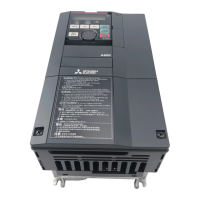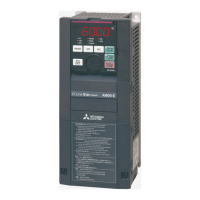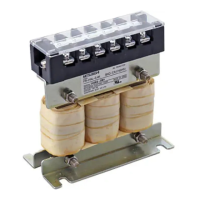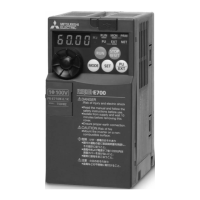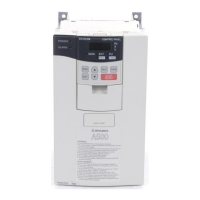99
Setting of acceleration/deceleration time
and acceleration/deceleration pattern
(3) S-pattern acceleration/deceleration B (
Pr. 29
=
"2")
For prevention of load shifting in conveyor and other applications. Since
acceleration/deceleration is always made in an S shape from current
frequency (f2) to target frequency (f1), this function eases shock produced
at acceleration/deceleration and is effective for load collapse prevention,
etc.
(4) Backlash measures (
Pr. 29
=
"3", Pr. 140 to Pr. 143)
What is backlash?
Reduction gears have an engagement gap and have a dead zone
between forward rotation and reverse rotation. This dead zone is called
backlash, and this gap disables a mechanical system from following motor
rotation.
More specifically, a motor shaft develops excessive torque when the
direction of rotation changes or when constant-speed operation shifts to
deceleration, resulting in a sudden motor current increase or regenerative
status.
To avoid backlash, acceleration/deceleration is temporarily stopped.
Set the acceleration/deceleration stopping frequency and time in Pr. 140 to
Pr. 143.
(5) Variable-torque acceleration/deceleration (Pr.29 = "6")
This function is useful for variable-torque load such as a fan and blower to
accelerate/decelerate in short time.
In areas where output frequency > base frequency, the speed
accelerates/decelerates linearly.
CAUTION
Setting the backlash measures increases the acceleration/deceleration time by the stopping time.
Parameters referred to
Pr. 3 Base frequency Refer to page 82
Pr. 7 Acceleration time, Pr. 8 Deceleration time, Pr. 20 Acceleration/deceleration reference frequency Refer to page 94
Pr. 14 Load pattern selection Refer to page 84
Pr. 592 Traverse function selection Refer to page 292
f1
Setting value "2"
[S-pattern acceleration
/deceleration B]
f2
Time
Set frequency
(Hz)
Output frequency
(Hz)
Pr. 142
Pr. 143
Pr. 141
Pr. 140
Pr. 13
Output frequency (Hz)
[Anti-backlash measure
function]
Setting value "3"
Time
Setting value "6"
[Variable-torque
acceleration/deceleration]
Pr.3
Base frequency
Setting
frequency
Pr.7 Acceleration time
Time
Pr.8 Deceleration time
CAUTION
As the acceleration/deceleration time of variable-torque acceleration/
deceleration, set the time taken to reach Pr. 3 Base frequency, not Pr. 20
Acceleration/deceleration reference frequency.
REMARKS
When the base frequency is not 45 to 65Hz, the speed accelerates/decelerates
linearly even though Pr. 29 = "6".
Variable-torque acceleration/deceleration is disabled when traverse function is
enabled (Pr.592 = "2" or Pr.592 = "1" at External operation mode).
Variable-torque acceleration/deceleration overrides Pr. 14 = "1" setting (for variable-
torque load). Thus, when Pr. 14 = "1" while variable-torque acceleration/
deceleration is valid, inverter operates as Pr. 14 = "0" (for constant-torque load).

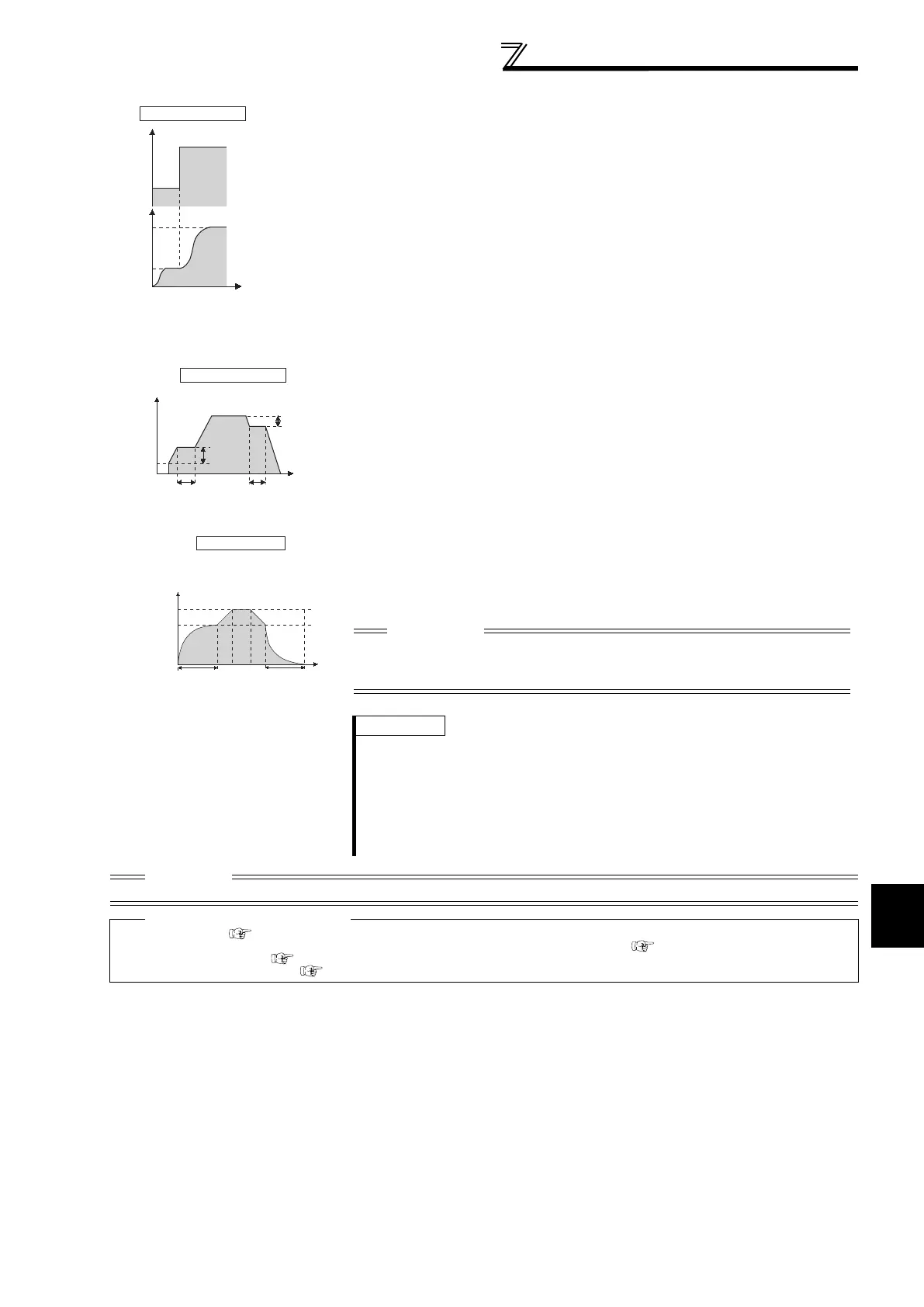